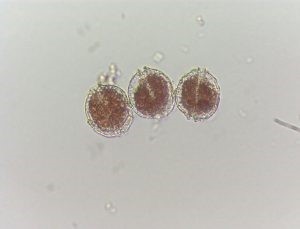There is no worrying evidence of harmful algal blooms during the summer of 2023 in Los Lagos region
February 23rd, 2023Specialists in harmful algae blooms from Fisheries Development Institute (IFOP) and the Center for Harmful Algae Studies (CREAN) of this Institute, Dr. Oscar Espinoza González and Dr. Leonardo Guzmán Méndez, have deemed it necessary to extend this statement, given the worrying news on the matter, which have recently appeared in the national media.
So far in 2023, provided data by two monitoring programs for Harmful Algal Blooms (FAN) and marine toxins developed by IFOP through CREAN, contrary to what has appeared in the press, show a scenario peace of mind when it comes to harmful microalgae and marine toxins. As in 2022, during the current summer period there has not been a worrying increase in microalgae, especially those that usually cause public health problems and affect productive activities. However, in certain sectors there has been a significant increase in Dinophysis acuminata, a dinoflaglelate associated with toxins known as pectenotoxins (PTX), which fortunately are currently not regulated, since they do not cause public health problems.
For this reason, it is in our interest to transmit a tranquility message given that our early warnings are based on information that comes from at least 300 monitoring sites between the Biobío (36ºS) and Magallanes y Antártica Chilena (55ºS) regions.The data obtained from the different variables that have been regularly monitored by these research for 15 years now allow us to have more and better information, which allows a better diagnosis, support, generation of knowledge and delivery of well-founded opinions about the atmospheric and oceanographic processes that determine the occurrence and intensity of HABs in central and southern Chile.
With summer’s season arrival and with consequent change in meteorological and oceanographic conditions that it produces, the probabilities of HAB occurrences increase. Therefore, in a localized manner, it should not be surprising that some flowering could occur in very specific sectors, but in general they do not represent great geographical coverage problems, which imply strong impacts on social and economic environment and that put risk on public health and hinder productive activities such as fishing and aquaculture. Due to this, it is necessary to know the current state of HAB and marine toxins, to have short-term projections in sectors that support resource extraction, salmon farming and mites, central aspects of the work carried out in IFOP’s CREAN.
Our recommendation in this period of the year is to maintain vigilance, the flow of information and a responsible attitude towards a potential area affected by harmful events, where it is convenient, attend and listen to the guidelines provided by the authority, in order to protect the people’s health and minimizing the impacts on productive activities.
Press related links:

